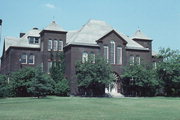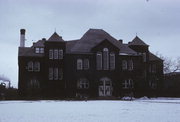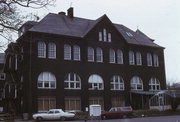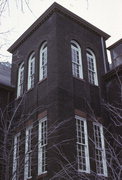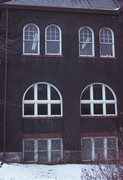| Additional Information: | A 'site file' exists for this property. It contains additional information such as correspondence, newspaper clippings, or historical information. It is a public record and may be viewed in person at the Wisconsin Historical Society, State Historic Preservation Office.
Pearsons Hall of Science is architecturally significant as representing the work of a master firm of architects headed by Daniel Burnham of Chicago, one of America's most important architects at the turn of the century. Although the Burnham firm was most noted for its tall office buildings, and later its academic eclecticism, this building, built in 1891-1892, was designed in a free adaptation of the Romanesque Revival style, popularized by H.H Richardson. The original plans, signed by Burnham, are now in the possession of the College. But Burnham's earlier partner, John Wellborn Root, had an influence in the design: "Plans were in the hands of chief architect Root at the time of his death," it was reported.
An imposing building faced with rusticated plum brown brick, with a skeletal framing system of iron posts, Pearsons Hall of Science is composed fo three attached elements: a middle section with apse, and two matching wings set back from the front facade of the middle section. Each of these units is capped with a hipped roof broken by central gables. There is a slight flare at the corners of the roof which is further enhanced by projecting cornices with dentils. The middle section is flanked by twin towers nestled in the setback formed by each adjoining wing. The towers rise a full three stories and are surmounted with pyramidal roofs crowned with decorative metal finials.
Romanesque Revival elements, perhaps owing something to Root's influence, are expressed in the large massive blocks of wall interspersed with rows or series of round-arched windows. The walls are battered about the string courses and foundations. The principal entrance, set into a large open arch, is decorated with a lunette screen of ornamental iron filigree. Above this entrance are three tall windows set in a tryptych arrangement and rising into a gable. The first story windows are enclosed within large arches and framed with voussoirs which are flush with the walls. But decorative detail is subordinated to concerns of massing and materials.
Aside from its historical value as the only work of Daniel Burnham's architectural firm in Rock County, Pearsons Hall of Science has further historical significance in its association with the development of the scientific curriculum of Beloit College, and in its association with the presons who taught and studied there.
Although the college had offered scientific instruction since the early 1850s, classes and equipment were confined to a small wooden building and limited by a shortage of funds and facilities. In an attempt to rectify this situation, the College's second president, Dr. Edward Dwight Eaton, spearheaded a fund raising drive which raised $180,000, including a $60,000 grant from Chicago benefactor Dr. D.K. Pearsons. The new building, constructed in 1891-1892, represented a considerable advance for the college, providing classroom and laboratory space for the departments of chemistry, physics, mathematics, biology, zoology, and geology. The students who were prepared there and the instructors who taught there have included several notable people, among them Roy Chapman Andrews, Dr. Erastus Gilbert Smith, and others.
This building is also a contributing resource to the Near East Side Historic District. |
|---|

